This is Part 2 of my two-part review of Limited in 2022. If you missed Part 1, feel free to get caught up here. Otherwise, let’s get moving into the latter half of Limited in 2022. As a brief reminder, I’m going to use each product as a lens to appreciate a lesson (or multiple lessons) from that set. I won’t be giving sets letter grades—I find they tend to be more provocative than informative. Some of these reviews will be much briefer, usually because I’ve written about the set in depth already. Others will be… less focused on the sets themselves. You’ll see. I’m using each product as a lens to appreciate a lesson, not reviewing each of them in detail. So with that said, let’s complete the review of Limited this year; there was a lot to see and experience.
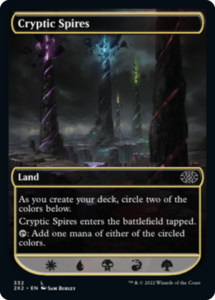
Double Masters 2022
The seesaw continues, as after disengaging from three consecutive sets, Wizards gave me something I absolutely loved. Double Masters 2 was exactly my cup of tea, and only had one stain on its record—its ludicrously low availability. I was only able to draft it once in paper due to the product’s short supply, though I drafted it twenty times on Magic Online (thank you, phantom events!). Double Masters 2022 affirmed that Wizards can make great Masters-level expansions, and those consistently rank among my favorite sets. Hopefully the next Masters set won’t have such short supply. Hopefully, much of that has to do with shipping issues outside of Wizards’ control rather than a desire to leave money on the table via underprinting.
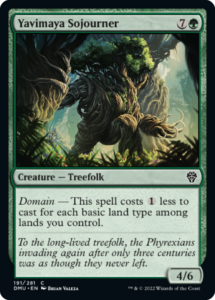
Dominaria United
We’re now getting into very recent sets, and there’s been less time to reflect on them. I enjoyed Dominaria United, though I don’t expect it to rank among my most beloved sets. It reminded me of Kaldheim and Strixhaven. All three were defined by very strong fixing that compressed the format into greedy multicolor piles, and lean decks meant to prey upon them. Dominaria United is likely my favorite of the bunch because of how its discrete card packages (like Tolarian Terror, Shield-Wall Sentinel, and Queen Allenal of Ruadach) could create real textural differences among different Domain decks. Time will tell how much I enjoy it as a flashback draft, but I’ve bought a couple boxes in the expectation of this being a format I’ll be nostalgic for.
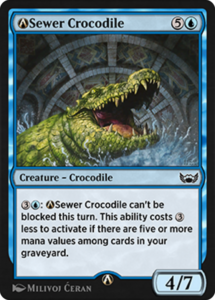
Alchemy-modified drafts: SNC, DMU, HBG, and SNC rebalanced
For the last time today, let’s talk about sets I didn’t play. Here, we’ve got a four-for-one deal, as we’ll discuss four different Arena-exclusive adjustments to Limited and what they suggest about Alchemy Limited overall.
First, there was Alchemy: Streets of New Capenna. This was SNC draft, except one card per pack was replaced by an Alchemy: New Capenna card. These cards didn’t seem designed for Limited. It was a good way to provide players access to Alchemy cards. For the format’s first six months, the only way a Limited-only player like me could play with Alchemy cards was via Arena cube. Despite this, appending them to SNC was insufficient to entice me back into playing a format I rather reviled. If anything, it diminished my opinion of Alchemy products as it felt like they were being tossed thoughtlessly into a format never meant to contain them.
Months later, Dominaria United got its own special queue with Alchemy cards. I skipped it once again, because I was enjoying Dominaria United enough without needing the new cards. That presents a question: under what circumstances will Alchemy modifications elicit excitement and engagement? I’m not asking how can Alchemy make a set better—there are plenty of ways it can technically improve a format—but under what circumstances will Alchemy changes change player behavior. When will it make people want to play a format more than they already are, or return to a format they’ve left? Is Alchemy better at rehabilitating problematic formats or spicing up popular ones? I don’t know the answer, but I know Alchemy wasn’t meant for me. My impression of Alchemy, coupled with the awkwardness of playing two different versions of a format in tabletop and online, meant neither situation was personally alluring.
In addition to Alchemy additions to Limited formats, there were two rounds of live-balancing. Both Streets of New Capenna and Alchemy Horizons: Battle for Baldur’s Gate had substantial balance issues. Both saw Alchemy-modified versions where weaker cards were buffed and stronger cards were nerfed. Data suggested these changes were very successful at rebalancing those environments. This was a different way of asking the question, “can Alchemy entice players back into formats they disliked?” For me, the answer was yet again no. “Hey, we drastically improved this format you hated/outright ignored” didn’t entice me.
Alchemy feels like a big missed opportunity atop a foundational issue. Magic players may be used to live-balancing in other games, but it takes time to get accustomed to it in Magic… especially when Alchemy coexists with formats like Arena Standard and all tabletop formats which never receive card changes. Constructed gets occasional live-balancing via bans. Starting with these missed opportunities, a lack of competitive push, and Wizards encouragement to opt out of experiences seemingly not meant for you, Alchemy as a whole has passed me by. It’s a shame. There are lots of cool affordances digital Magic provides, but the opportunities presented to me over the past year couldn’t compete with the familiar offerings.
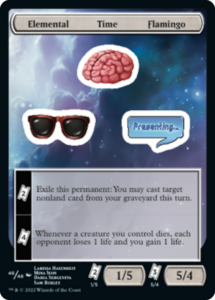
Unfinity
I’ve already reviewed Unfinity and it’s probably my biggest disappointment of the year. Streets of New Capenna was far worse for me as a player, since it meant there was a five month period with little to play, but there’s always variation in Premier set appeal. With Unfinity, I was really looking forward to an Unstable-like experience of fun, wacky designs coupled with a surprisingly deep Limited format. Unfinity was not that for me.
Unfinity seemed like the set which suffered the most for having been refined during the pandemic. It felt less that the product was not for me, and more that it was underdeveloped. It had persistent usability issues with stickers and battlefield clutter, awkwardly wordy or outright confusing cards, and unclear draft signposts. These are issues which likely would have been ironed out with more in-person playtesting. But in-person development simply wasn’t possible for much of 2020-2021, when Unfinity went through Set Design.
I even played Unfinity under what felt like ideal conditions (Mark Rosewater’s giant Unfinity draft at Magic 30) and it still felt like most people I interacted with were having mediocre times. There were definitely some pretty fun moments, but they lived between long periods of comprehension complexity and rote executions of game actions. Unfinity makes me a bit more skeptical of future silver bordered sets, and that makes me sad, since I loved Unstable.
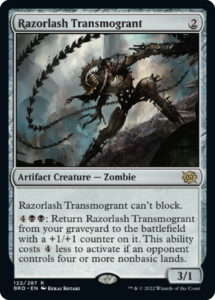
The Brothers’ War
Finally, we’ve reached the present moment. Brother’s War has been out for a few weeks, which means BO3 queues have longer wait times and attention is beginning to turn to the next set. Arena has accelerated the pace of play. It still feels too soon to make a major judgment about the set. I value the perspective of hindsight, especially whether I have enthusiasm about picking up boxes to replay a set, but I do have a lot of feelings about The Brothers’ War.
I really love the retro artifact slot, just as I loved Strixhaven’s Mystical Archive. I enjoy the set’s construction, with how it enables monocolor and multicolor play. I like the nostalgic callbacks to Magic’s mechanical, narrative, and design histories. I love the focus on plot, both Magic’s current big Phyrexian arc and Magic’s original epic story that I barely understood as a kid. There was a lot that appealed to me. But the more I drafted Brothers’ War, the more it reminded me of Amonkhet and Kaladesh—sets with loads of cool tools that were (generally) overshadowed by how difficult it was to block profitably. I can’t say why aggro decks appealed to me in Throne of Eldraine and Guilds of Ravnica, but not Amonkhet or The Brothers’ War, but I just don’t enjoy playing with or against them. I don’t expect to sit on a couple boxes of BRO to reexperience the format in a couple years. The format doesn’t strike me as bad, rather its balance makes it a more perfect set for other people. And that’s great! The set is absolutely for me even if it’s not as great for me as NEO or 2X2 were this year. Magic should have those kinds of sets every year.
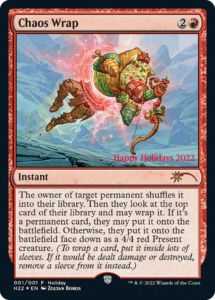
In Retrospect
2022 was a strange year. It was a year of unprecedented releases, and the year I changed my behavior to live amidst them. It taught me to be a little bit less experimental and to try a smaller percentage of things, while also playing more products than ever before.
2022 was also a year of wild swings in quality among products I did play. Streets of New Capenna and Unfinity were big disappointments. Dominaria United and The Brothers’ War were good-but-not-great sets for me (with DMU edging out BRO), and both Kamigawa: Neon Dynasty and Double Masters 2022 were excellent for me.
Lastly, this year was defined by something I didn’t even touch in this series about products released by Wizards of the Coast: Cube. In 2022, I created my second cube and brought it to CubeCon, met a bunch of fantastic people in the Cube community, and found more and more of my enjoyment of Magic came because of Cube. I expect to prioritize it even more in 2023, potentially even over the competitive Limited events I used to schedule my year around. That’s an open question I’ll have to answer in February when I travel down to MagicCon Philadelphia, to either play in Limited PTQs or Cube draft with friends. Time will tell. But that brings the year to a close. In a few hours, the spotlight will shift to Phyrexia: All Will Be One and 2023’s season will essentially commence. And, as always, thanks for reading.
Zachary Barash (he/him) is a New York City-based game designer and the last commissioner of Team Draft League. He designs for Kingdom Death: Monster, has a Game Design MFA from the NYU Game Center, and does freelance game design. When the stars align, he streams Magic (but the stars align way less often than he’d like).

